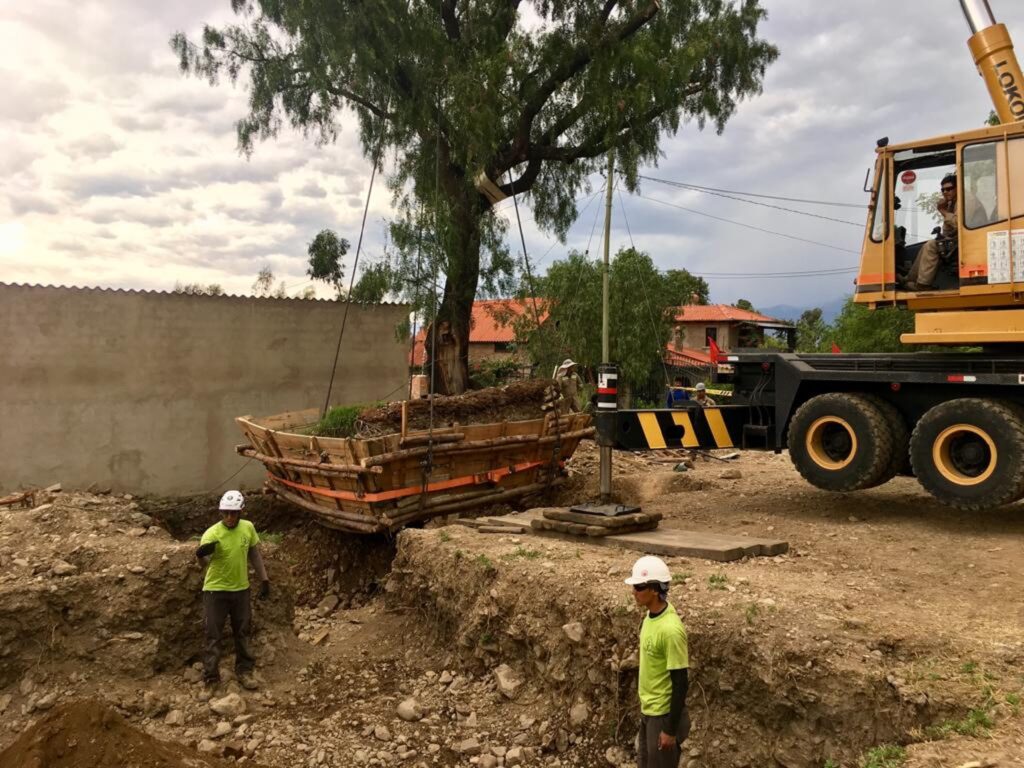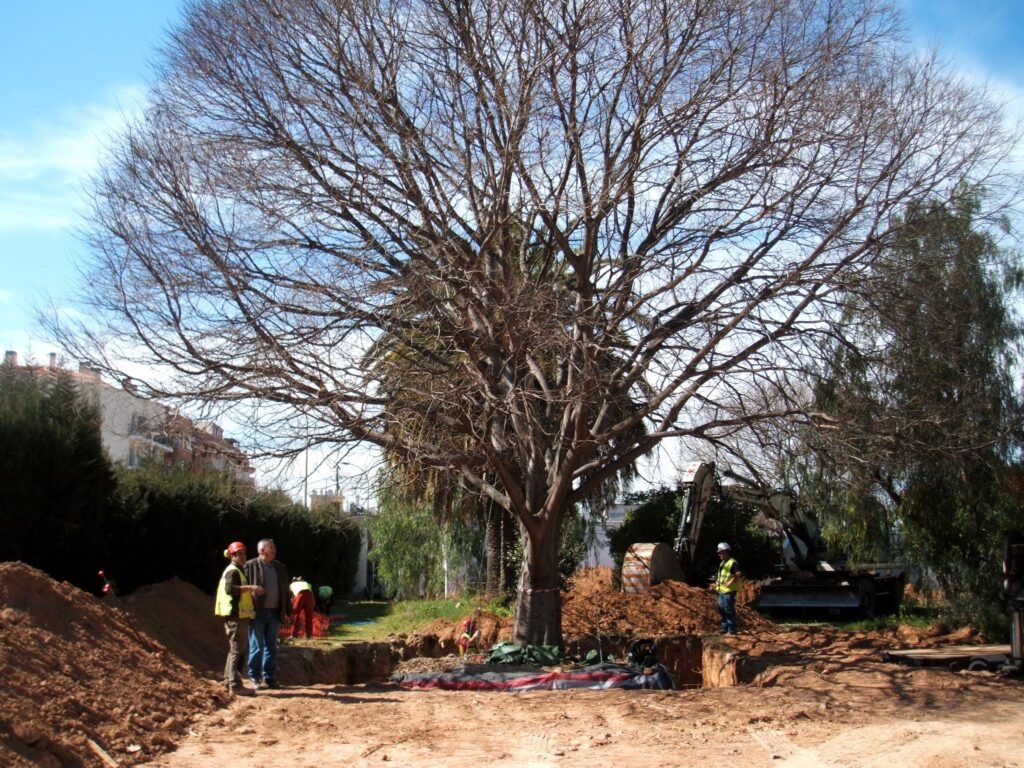Transplanting a tree is a fairly complex practice within arboriculture. A project of this type requires technical knowledge, trained personnel and large equipment to carry it out. When transplanting a tree, care must be taken with the roots, taking into account how far away they can be pruned, since mistreatment of the roots even implies the death of the plant. In this post we say when to transplant a tree.

Transplant a Tree
Trees are important elements within natural and urban landscapes, in some cases they are part of the history of couples, families, places and even of great political and religious decisions, such as the Religious ficus, associated with Buddhism. As a way to protect trees, the practice of tree transplantation was implemented in environmental design projects.
Transplanting trees requires technique and science, since each tree is particular and therefore has to be carried out following a detailed plan. To carry out this type of activity, tools and processes have been designed and patented to help professional tree experts relocate large tree specimens during a landscape project. To carry out a tree transplant, some general guidelines must be followed that are independent of the tree to be moved and the new space where it is relocated, below.
when to do it
The best time to relocate and repot trees is when they are in their vegetative phase and soil conditions are right. Regarding climatic conditions, during the winter months the rate of transpiration decreases in species with evergreen leaves and there is no transpiration in deciduous trees. In its vegetative phase it is more favorable for severe pruning that is done to reduce the volume of branches and leaves.
Tree species and other variables
The transplant of trees is conditioned by the size and species of the tree. You have to know the environmental requirements where it grows in nature, to know how to select the place to relocate it, amount of lighting, soil drainage conditions. Potential dimensions of individual development. In addition to this, the relocation of the foundations, electrical network passes, gas, water, telephone and other pipes must be taken into account.
Phytosanitary status
The phytosanitary and nutritional conditions of the tree must be examined. In case of being sick or attacked by a pest, the appropriate treatments must be carried out to recover the specimen either from the disease or to have eliminated the insects, arachnids and any other pest that affects it. It is suggested to pay or fertilize during the months prior to the transplant to accumulate nutritional reserves.
Prune the tree
To carry out the transplant, severe pruning of the tender terminal branches must be carried out. This will allow an excess of ascending sap to be produced in the future, which will be the best help for the sprouting of new buds. Once the pruning is done, the cuts on the branches and roots must be healed. It is suggested to use a vegetable healing agent, such as tar. This reduces the loss of sap and attack by microorganisms.
mentor
Tutors are placed at four different points, for this ropes or ropes are placed, as well as stakes and braces. These tutors have to be placed when transplanting and it is suggested to keep them in place after transplanting to their selected place as definitive. This can be left for at least one year and what is convenient between 3 to 4 years, with the aim of growing firm and healthy.
Prepare the root ball
The diameter of the circumference of the root ball is delimited with a shovel to the depth. The success of the tree transplant is directly conditioned by the size of the soil root ball. This is done with the aim of removing the tree with its roots, as complete as possible, and taking it to its new planting site with the help of heavy machinery. While transplanting, care must be taken not to damage the ends of the rootlets.
At these ends of the rootlets are the absorbent hairs of the roots, these are the specialized organs to absorb water and minerals from the soil. The absorbent hairs are very fragile and for this reason the root ball or earthen bread must be treated with great care. Protect the root ball so that it does not split.
To prevent the root ball from splitting, it is removed and immediately placed from the base of the trunk and all the roots are wrapped with a suitable material such as a jute blanket, polyethylene bag, it is suggested to use a biodegradable material In this way, this envelope does not have to be removed, but the tree is planted with the protection.
Verticality
To help place the tree completely vertical, a plumb line is made with a rope and a stone is tied to the end or with visual observation from two points of view separated by 90 degrees. In reference to the most appropriate tutor, it will depend on the species of the tree, environmental conditions and the soil.
At times rope straps, poles or stakes are used, fixed quite well, nailed to the ground and tied to two points on the tree. At other times, stronger protection is placed with several stakes surrounded by wire mesh. With these stakes it is necessary to prevent the ties from damaging the bark of the tree. The stakes are left until new branches begin to develop.
open the hole
The opening of the hole is made before starting the tree transplant operations, this has to have a size preferably double the circumference diameter of the root ball. The soil with which the hole is filled is suggested to be prepared with a mixture of black earth fertilized with matter rich in nutrients, according to the nutritional requirements of the treated tree and with good drainage, and loose for the good development of the roots.
Plantation
When planting the transplanted tree, it is placed with the neck at ground level, taking into account the orientation prior to the new relocation. Once planted, the stakes are placed and finally abundant irrigation is applied. During the first months and years, a follow-up of the phytosanitary conditions of the entire tree and the condition of the stakes is carried out, for this it has to be checked after a day of rain and strong winds, adjust the stakes and ropes of the tutors so that the tree grows healthy and strong.
I invite you to continue knowing the wonderful nature and how to improve it, reading the following posts:

